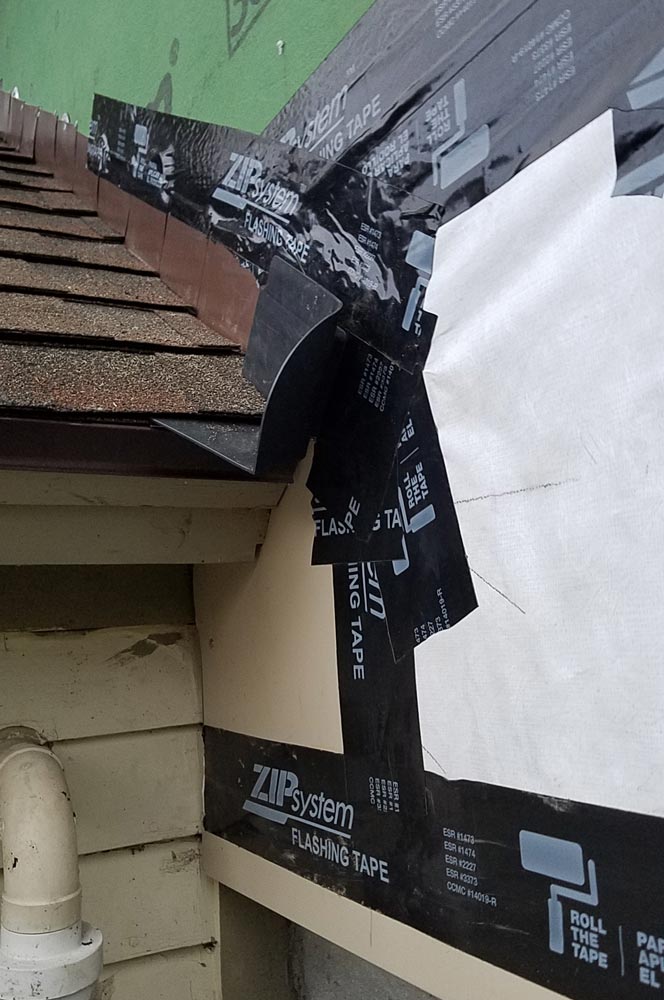
People unfamiliar with construction methods and jargon often ask what is flashing.
Flashing is used in the exterior envelope of the house to keep bulk moisture out (water, not water vapor or ice). The central premise is that water flows downhill which is the case except when we have wind blowing it uphill, we have an area where water pools and fills with a rising level or a wicking action.
Flashing is accomplished with a variety of products like metal coil stock, wind barriers, underlayments, tapes, specialty boots and hoods, roofing, trim and siding materials, temporary materials like roofing cement, caulk or through the roof sealant.
Flashing is always bottom to top. You start with the bottom course of siding or roofing and the following courses go on top. Water at the top will flow down over each course on top of the next until at the bottom it runs or drips off.
Areas of special concern are roof to side wall connections, deck to house connections, roof penetrations, chimneys, drip edge details, door and window openings and exterior trims.
Some specialty flashings used to avoid issues in these places are: window and door drip caps, window and door pan flashings, self adhering flashing tapes for deck ledgers and openings like doors and windows, ice and water shield and synthetic roof underlayment, Tyvek or similar wind barriers and drainage plains, firing strips or other methods to provide a gap between wall cladding (brick, stone, cedar shakes, beveled siding, etc.) and the structural wall, roof to sidewall step flashings, kick out flashings, counter flashings, crickets, replacement roof boots for mastheads, etc.
Horizonal planes that jut out and will hold water will encourage infiltration and rot. One telltale sign is paint that is coming off. Paint will not adhere to wet wood. In areas where the trims touch or come close to a wet surface like the roof or grade, alternative materials like PVC or composites are appropriate as they do not absorb moisture and are impervious to rot.
The concept of flashing applies to water flowing at grade or horizontal areas as well. Moisture is the enemy, so providing pitch at grade away from the house for entry stoops, walkways, patios, and the earthen grade itself to move bulk moisture away from the house is essential.
Using correct flashing techniques is essential to the longevity of what is likely your largest investment, your home. In future blog posts, we will explore basic grading and drainage concepts and materials and methods to use close to, at or below grade.



